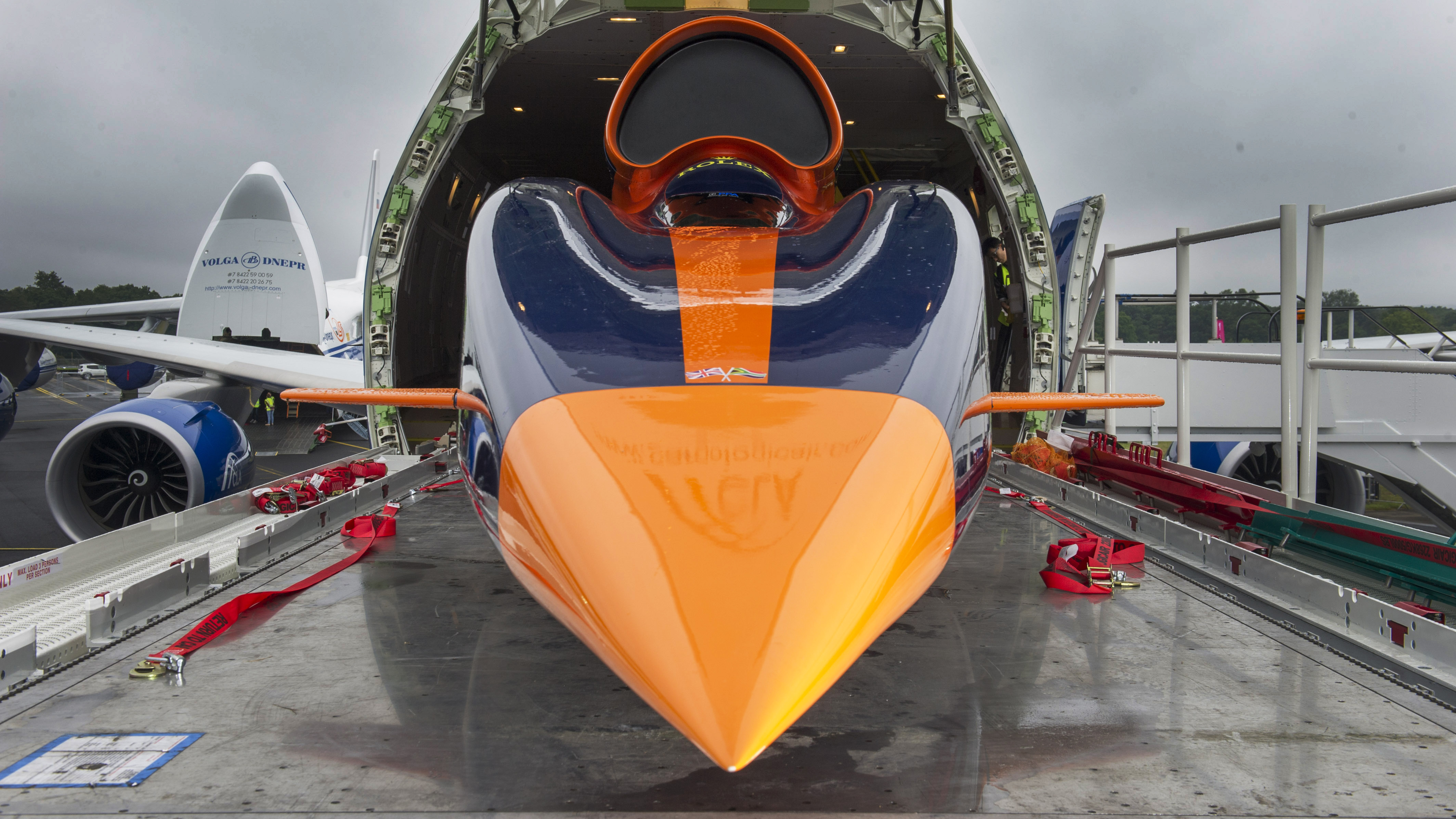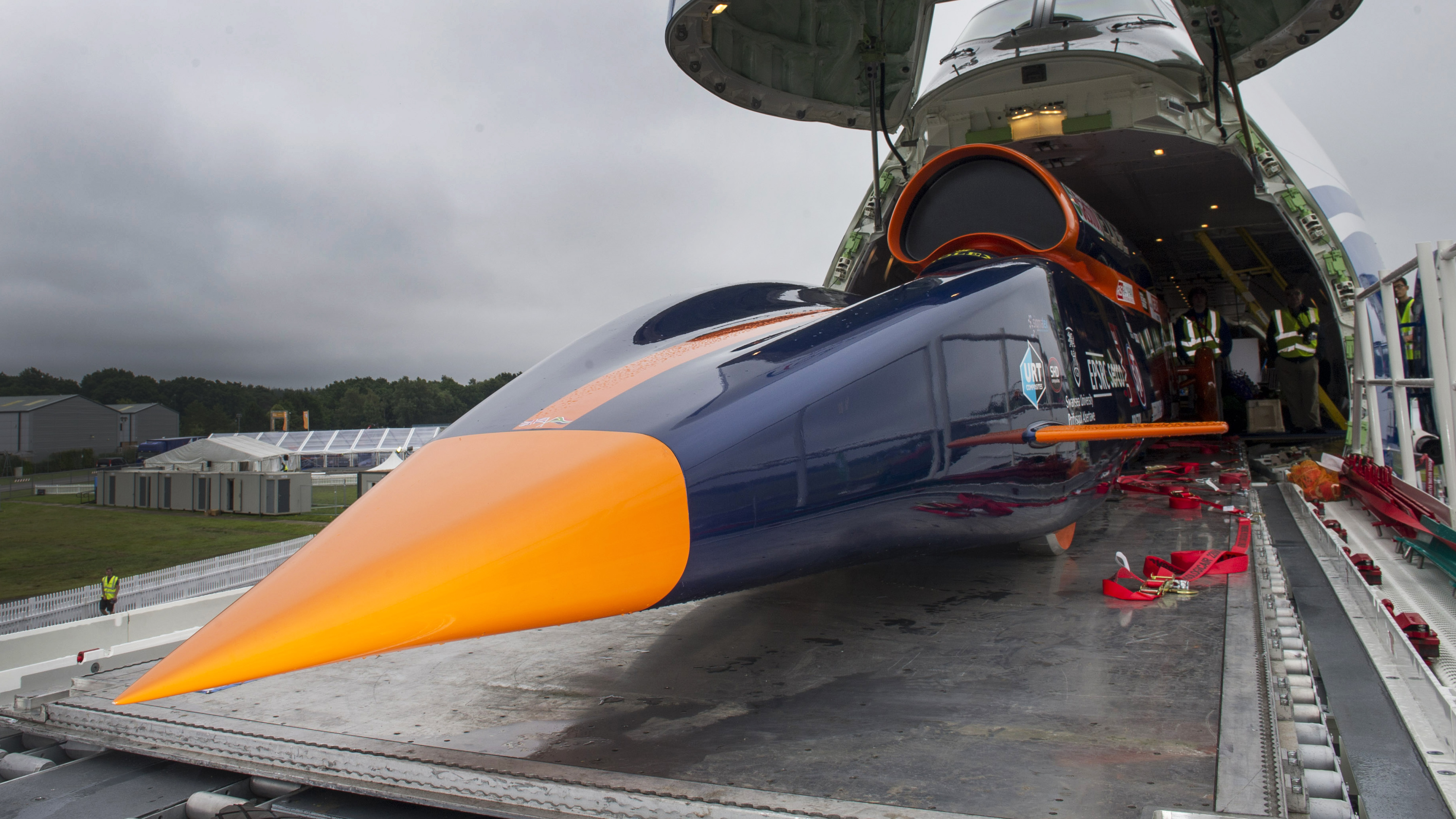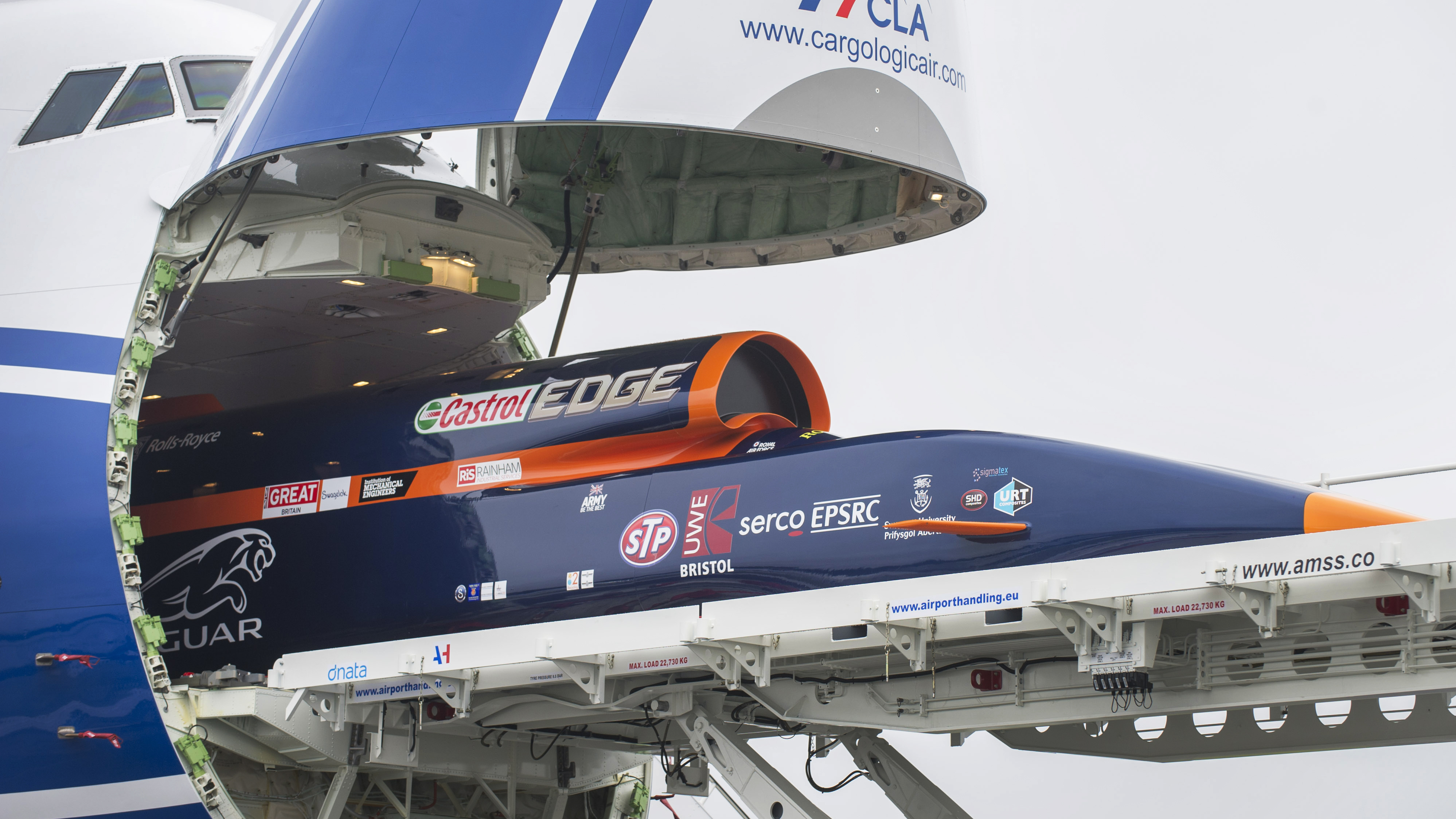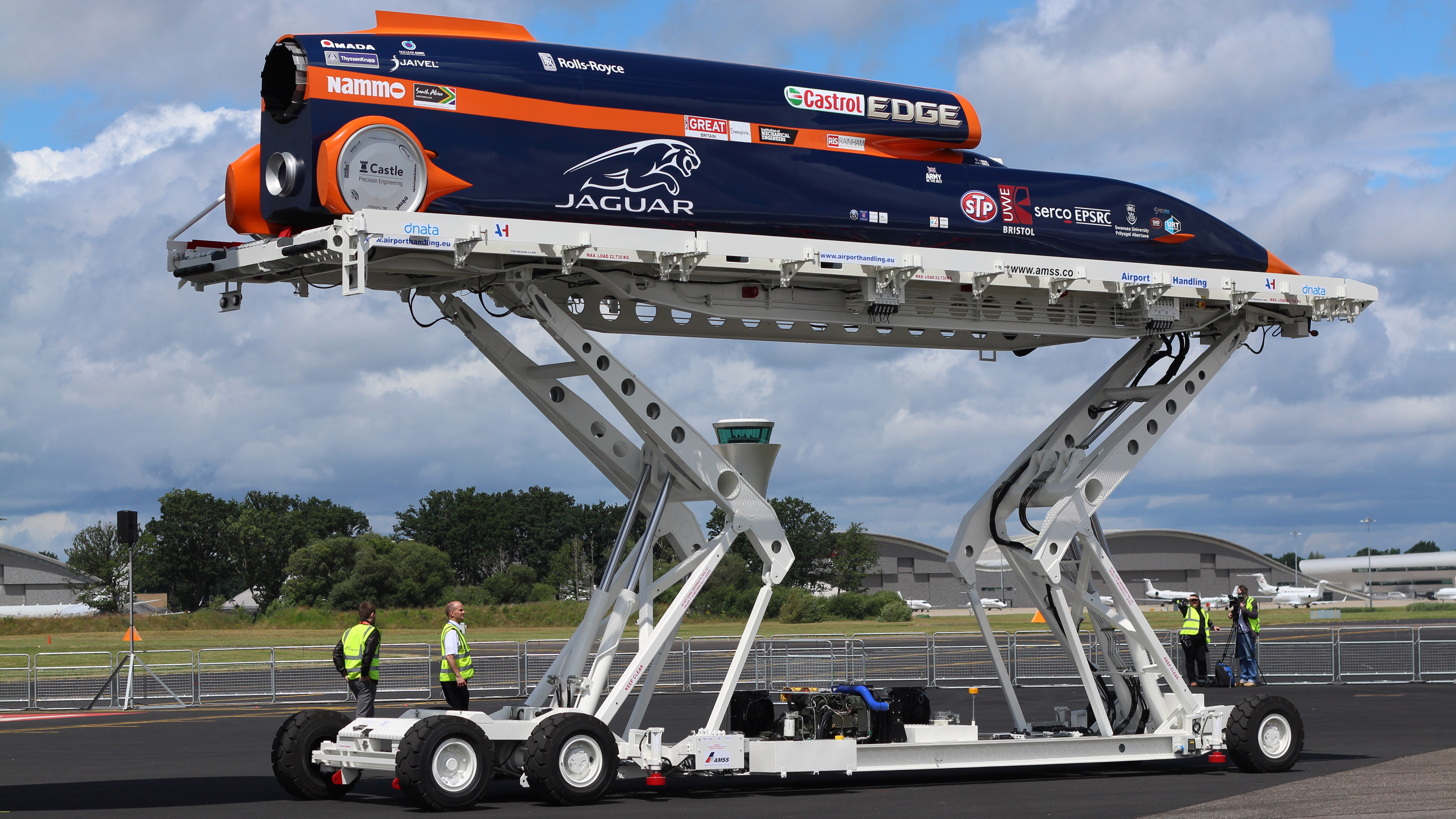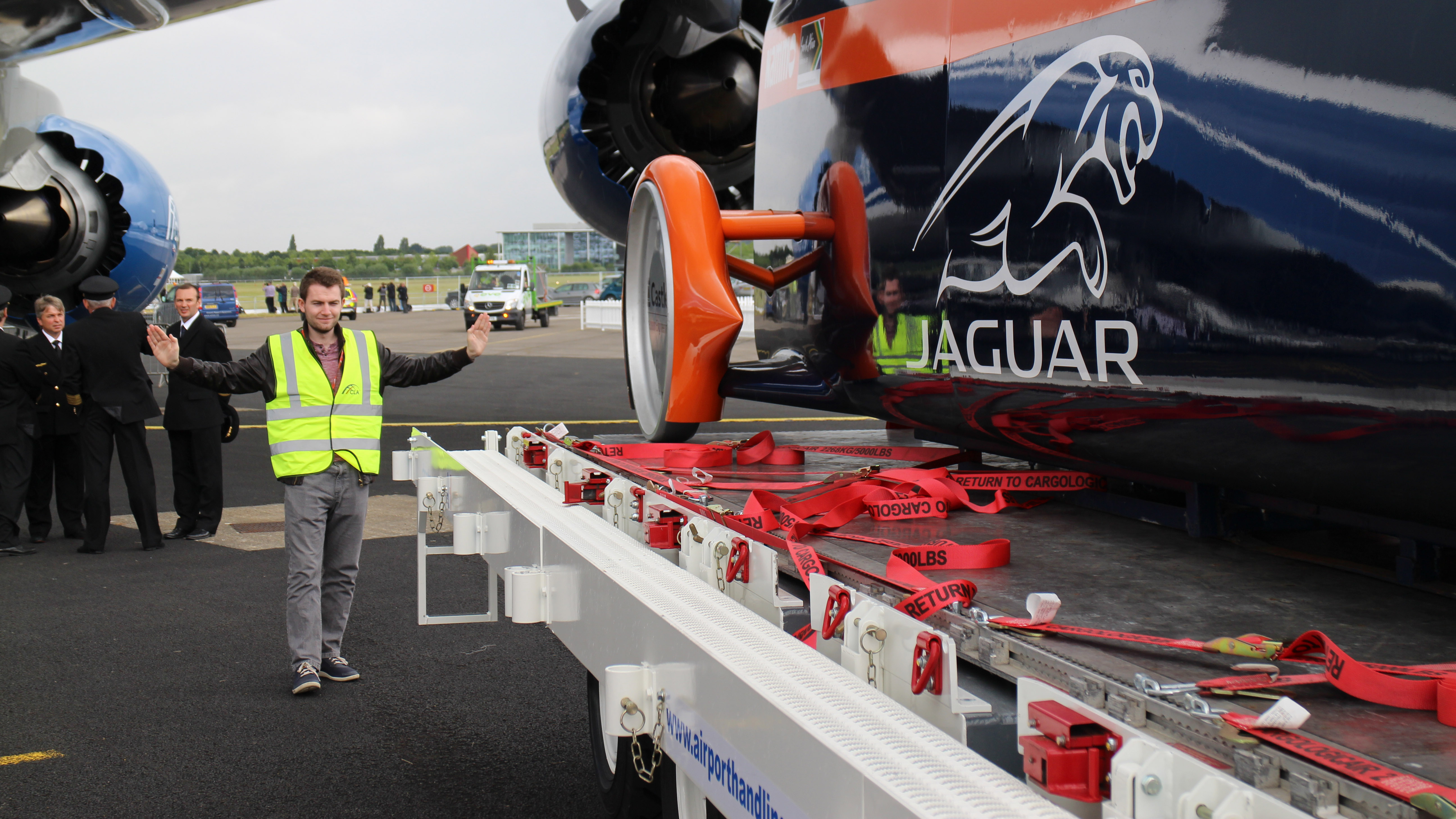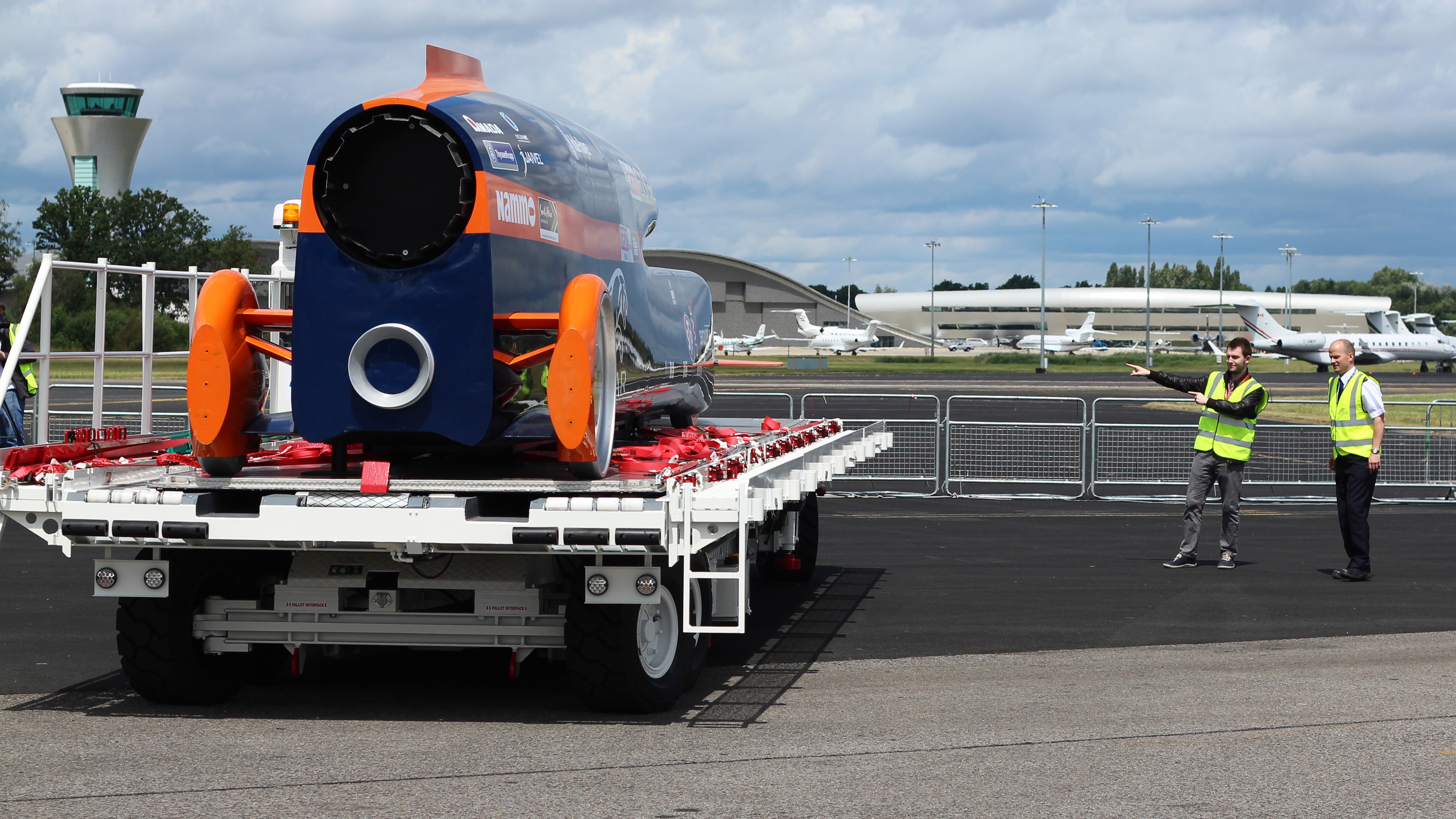
Could the Bloodhound kill off the land speed record?
Andy Green tells TG that 1,000mph might be the last attempt for a while
It’s not often that a Boeing 747 carries something faster than itself.
But that’s exactly what will happen when the Bloodhound SSC sets off on its journey to the Hakskeen Pan in South Africa next summer, where it will aim to set a new land speed record of 800mph before raising the bar again to 1,000mph the following year.
The whole project is a truly massive undertaking. To prepare the 12-mile runway, 317 local people were hired to remove 16,000 tonnes of rock by hand, equating to about 50 tonnes per person. Never before has the phrase ‘no stone left unturned’ been more appropriate.
And that’s just the foundations. When the team arrives the first job will be to build a temporary town, complete with a technical camp, workshop, control centre and accommodation for the 250 or so personnel who will be on site when everything is in full swing.
Operations Director Martyn Davidson is the man in charge of the logistics, and arguably he has the least enviable job of the entire team. He’s responsible for the 195 tonnes of kit – 100 of which is arriving by sea, the rest by air – needed for an attempt like this.
An ex-military man and veteran of the record-holding Thrust SSC project from 1997, Martyn will need to rely on every ounce of his experience to ensure that it all runs smoothly. As such, the 250,000m2 technical area shares a desert compound design often used by the army, while the site as a whole will be treated like one big airport.
Building a 1,000mph car sounds easy in comparison.
“I promised my family I’d never, ever do it again,” Martyn admits. So why is he doing it again? He shrugs. “What else would I do?!”
A key part of the transportation phase is the cargo plane. The Bloodhound will be flown to Upington in South Africa after low speed tests in Cornwall next year, courtesy of freight airline CargoLogicAir following a deal concluded at the Farnborough International Airshow last week.
There are two jets on offer: either a Russian Antonov or a Boeing 747, with the team yet to decide which would best suit their requirements. Much will depend on how easy it is to load and unload the car, hence the need for a trial run with a scale model on the tarmac at Farnborough moments after the contract was signed.
Top Gear
Newsletter
Thank you for subscribing to our newsletter. Look out for your regular round-up of news, reviews and offers in your inbox.
Get all the latest news, reviews and exclusives, direct to your inbox.
But who would be able to coordinate such a delicate exercise? Having tested the parachutes and helped assemble some of the Bloodhound’s components last year, naturally TG got the call.
With the car parked on a hydraulic loading platform, a high-vis jacket is tossed in my direction as a member of the Boeing crew explains the various hand gestures used to help guide the driver: double waving for ‘reverse’, parallel palms for ‘straighten up’, crossed arms for ‘stop’.
Never a natural on the dancefloor, what follows is a series of awkward movements akin to your standard ‘embarrassing uncle at a wedding’ variety, but they seem to do the trick as the vehicle inches back into its pre-marked slot in front of the plane.
Then comes the lift action, which happens at a slow but steady rate so as not to disturb the precious payload. The process has to be millimetre perfect, and if anything were to go wrong in the 25ft journey between the earth and the fuselage, that could be game over for what is nearly a decade-long project. High stakes indeed.
With the platform raised, the car rolls back on a floor of mechanised bearings, allowing the nose of the 747 to close behind it. In such a vulnerable state, it’s hard to believe that the real machine will trundle onto the desert floor in much the same way shortly before smashing through the sound barrier...
With that kind of target speed, you’d imagine that the insurance premium for driver Andy Green would be astronomical. But no. As an RAF pilot, Green’s policy simply has to align with that of the Ministry of Defence, and is underwritten by two syndicates and the RSA.
“I’ve got my life insurance as well, which I had since before the previous record,” says Green. “You tick the box saying ‘I have no intention of doing any risky high speed activities’. Of course at the time, I didn’t!”
Subsequently the company realised that their client was slightly more complex than they first realised, but after some consideration they decided to advertise their involvement rather than bump up the price. “So bless them, the insurance industry has taken a look and said ‘This is just great, we actually want to be a part of this.’”
And what a project to be a part of. Not only are Director Richard Noble and driver Green attempting to surpass the 763mph benchmark they set with the Thrust SSC in ’97, but they are aiming to do so with one of the biggest percentage leaps in the history of the land speed record.
“We’re now adding 31 per cent to that,” says Green. “That’s a startling jump.”
There’s an understatement. Such is the enormity of the proposed top speed – 1,050mph, officially – a successful run in 2018 will see the Bloodhound SSC simultaneously break the now defunct low-altitude airspeed record of 994mph, set by an American jet in the 1970s.
Breaking the sound barrier is fairly straightforward at 40,000ft. At sea level, it’s a different story.
“Next October when we’re trying for 800mph, it will be exactly 20 years since the previous record,” he continues. “Nobody has come close to it so far. If we weren’t building Bloodhound, are the Americans or the Australians going to get there? They haven’t for 20 years...”
It’s an interesting point. The faster they go, the likelihood is that the intervals between new records will only get longer and longer. And while bettering 1,000mph has undeniable appeal, it’s unlikely that anyone will be willing to go through a further ten years of work just to add another 100mph.
“Are we about to kill the land speed record? I really hope not,” concludes Green. “But if it’s going to be the last record for a long time, let’s make it a good one.”
Trending this week
- Car Review
BMW 1 Series
- Top Gear's Top 9
Nine dreadful bits of 'homeware' made by carmakers




